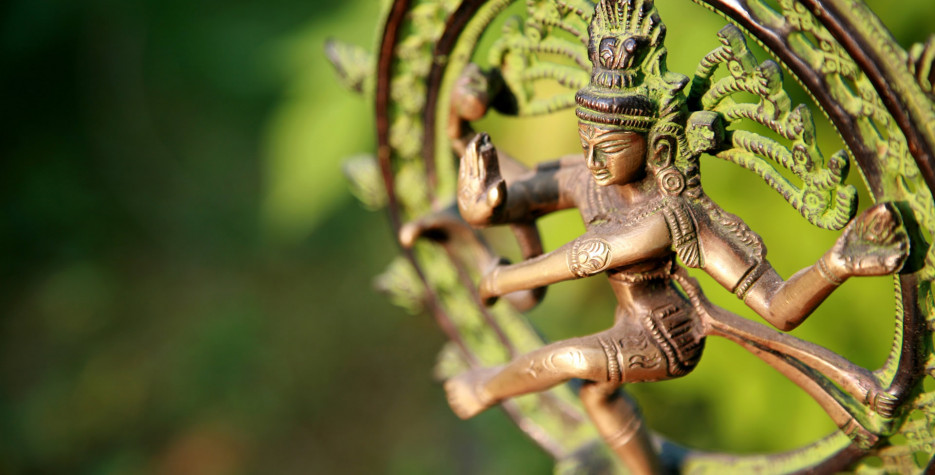When is Maha Shivratri?
Maha Shivaratri is a famous Hindu festival celebrated each year in reverence of Lord Shiva, the Hindu god of destruction and regeneration.
A Shivaratri is celebrated on the 13th night and 14th day of every lunar month. The Shivaratri in the month of Falgun (Phalguna) - the last month of the Hindu calendar - is Maha Shivaratri which means "the Great Night of Shiva". It takes place just before the arrival of Spring, usually in February or March in the Western calendar.
It is celebrated across India and is a holiday in most states and it is also a public holiday in Mauritius and Nepal.
What is Maha Shivratri?
The festival marks the end of winter and the arrival of summer and is a major observation in Hinduism. It is very significant to the Shaivism tradition of Hinduism, which worships Shiva as its primary deity.
The Maha Shivaratri is mentioned in several Puranas (Hindu Literature) and presents different versions of this festival and referencing the icons of Shiva.
Maha Shivaratri is the night when Shiva is said to have performed the Tandava Nritya, or the dance of primordial creation, preservation and destruction. According to believers, this saved the world from destruction. Hindu scholars say Maha Shivaratri was the day when Shiva drank poisonous negativity to protect the world.
Maha Shivratri is observed to mark a remembrance of 'overcoming darkness and ignorance' in life and the world. Unlike most festivals, is celebrated at night and is a solemn event.
Shivaratri is also when Goddess Parvati and Lord Shiva married again.
The festival is principally celebrated by offerings of Bael (Bel Tree) leaves to Lord Shiva, all-day fasting and an all-night-long vigil.
On Maha Shivratri, "Om Namah Shivaya", the sacred mantra of Shiva, is chanted throughout the day in Shiva temples. Special Puja is held at homes and temples.
Due to the link to Shiva’s "heavenly dance", many Hindus gather together for lively dance festivals some of which can be seen for miles.
The festival is international and is celebrated around the world.
In Pakistan, Maha Shivratri is celebrated by the Hindu community, who visit the renowned Shiv temple known as the “Umarkot Shiv Mandir.” This temple hosts a three-day Shivratri festival, attended by approximately 250,000 people. The entire event’s expenses are covered by the Pakistan Hindu Panchayat, showcasing communal harmony and support for religious festivities
The Lingam
Shiva is worshiped in the form of a lingam ( Sanskrit for "sign" or "distinguishing symbol") - a pillar often placed on a receptacle that represents female creative energy. Together it represents the union of organs and the totality of creation. The use of the lingam as a symbol for Shiva was introduced after the Aryan immigration into India, having been taken from aboriginal worship.
According to Hindu legend, Brahma and Vishnu were busy arguing over which among the three was the most powerful god. On hearing this, Shiva manifested in the form of a huge, flaming lingam. It was agreed with Brahma and Vishnu that whoever was first to find the end of the blazing column of fire would be considered the greatest of the Hindu gods. Vishnu, in the form of a boar, started looking for the bottom of the lingam, while Brahma, in the form of a swan, started looking for the top. After years of searching, neither had found an end, and they both had to acknowledge Shiva as the most powerful.
Flowers, incense and other offerings are made, while all through the day the devotees chant the sacred Panchakshara mantra dedicated to Lord "Om Namah Shivaya".
Bel Tree
It is believed that Lord Shiva is fond of the Bel tree, also known as the bilwa or bilva tree, and its leaves and fruit still play a main role in his worship.
Huge gatherings take place in temples all over India, though the biggest celebration is held in Ujjain, Madhya Pradesh, where Lord Shiva is believed to have stayed. Special celebrations are held at Shiva shrines in Tamil Nadu, Andhra Pradesh, and Uttar Pradesh.
All castes (divisions) of Hindu society participate in the worship of Shiva. The ceremonies surrounding Shivratri are particularly popular with Hindu women, especially those wishing to become pregnant.


